History of Henna Tattoos
Henna is the name used for the plant and the dye it gives when its leaves are finely ground into a paste. It is usually used in the art of temporary tattoo, as its strong pigments stain the skin and the hair.
Henna has been around for literally thousands of years, with its origins reaching back to the Ancient Egypt. Subsequently, it spread across the North Africa and Arabian Peninsula, to the Near East and further into the Indian subcontinent. Tradition of henna body painting is therefore one of the longest, with a distinctive symbolism tied to the practice.
Historical texts give multiple names for henna, implying that there was not a single point of origin, but many, while the henna routes differed as well.
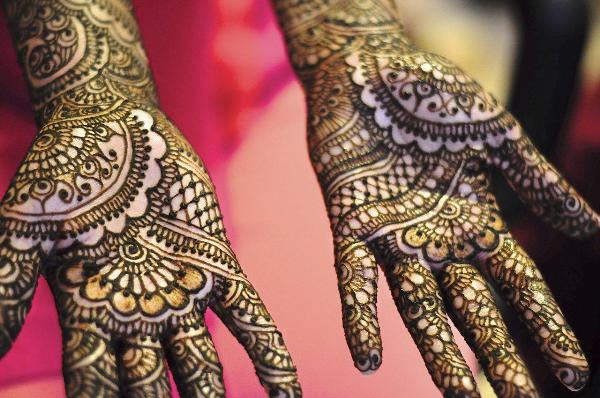
Even in the first artifacts testifying to the use of henna for tattooing, it was mostly related to women. Even in the late Bronze Age, young women used to decorate their bodies with temporary drawings in honor of various social or religious festivities. Ugaritic Legend of Baal and Anath is the first known text mentioning henna in terms of marriage and fertility, referencing that women adorned themselves with henna to greet their husbands, while Anath decorated herself the same way in honor of the victory over Baal’s enemies.
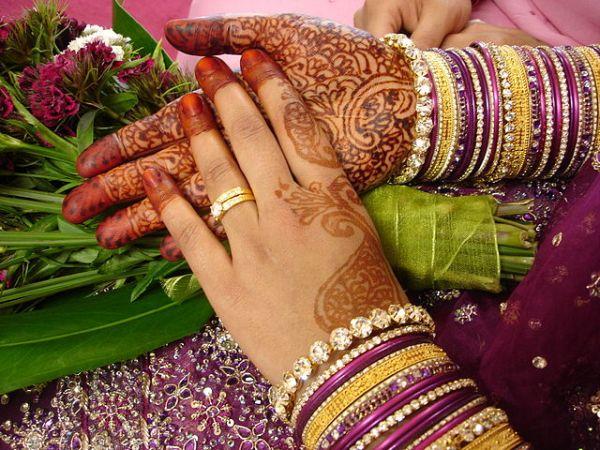
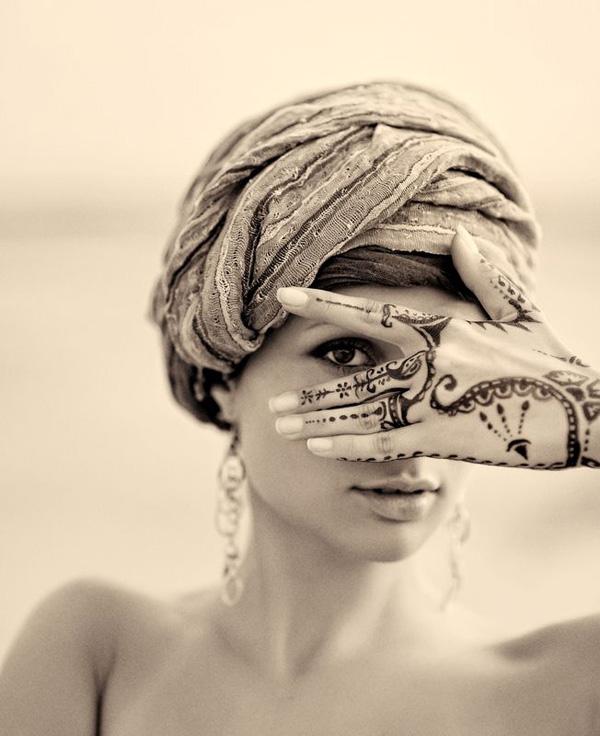
Greek island of Santorini is the place of Akrotiri excavations from before 1680 BC, where wall paintings were found depicting women with painted foot soles, palms and nails, in accordance to the henna tattoos. A myriad of female figurines was found across the Eastern Mediterranean dating back to 1500 BC to 500 BC, with their hands decorated in henna manner. The ancient tradition of young, fertile women decorating their hands and feet with henna lives on in the Night of the Henna (or Mehndi Night), today celebrated across the world.
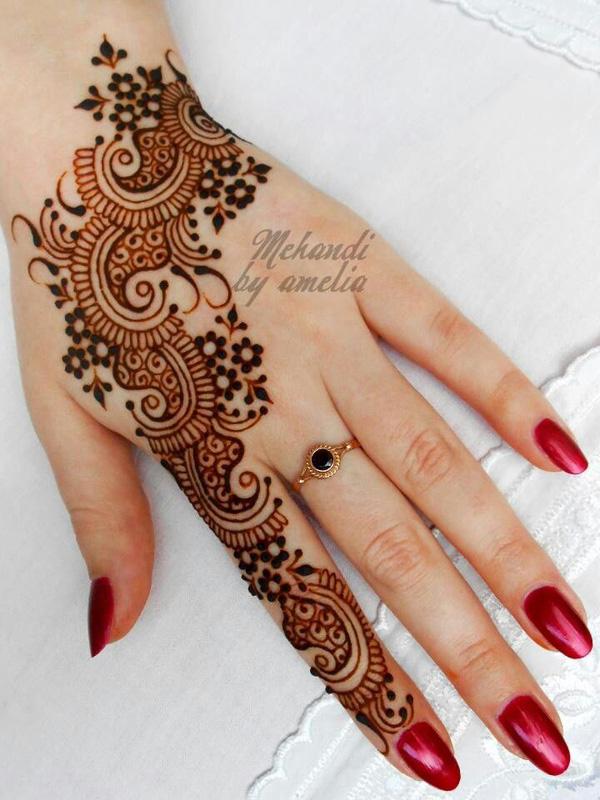
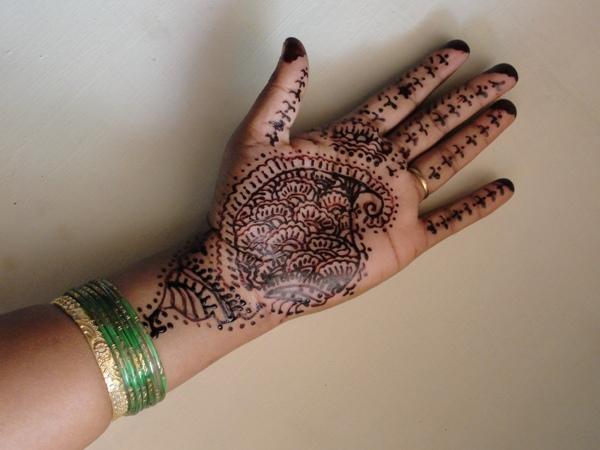
Bridal henna night originated in regions where henna was found growing naturally, among the Jewish, Muslim, Hindu, Sikh, Middle Eastern Christians and Zoroastrian peoples, which even today hold henna tattooing rituals prior to a marriage, sometimes even including the groom.
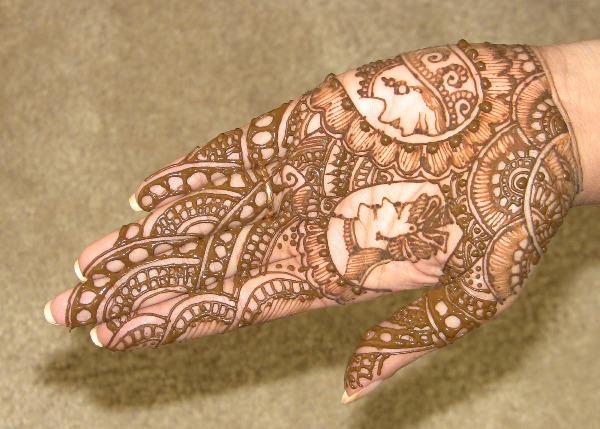
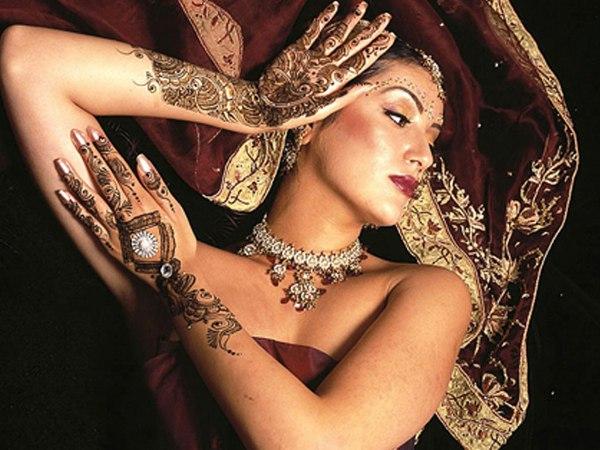
Interestingly, not only humans were allowed to decorated themselves with this wonderful plant. In honor of many saints and holidays of the indigenous religions, the most beloved horses, donkeys and hounds were made beautiful by having their hooves, paws and tails stained. All the major events in personal and family life were followed by certain henna body art, from victories to births, from circumcisions to birthdays. Henna became the symbol for happiness, celebration, abundance and beauty.
One more important characteristic assigned to henna tattoos is luck. Body drawings were made to bring good fortune to the embellished.
Bridal Henna is still one of the most traditional symbols of beauty. Young women were typically decorated with most ornaments, occasionally very complicated, while the tattooing ceremonies were known to last for hours.
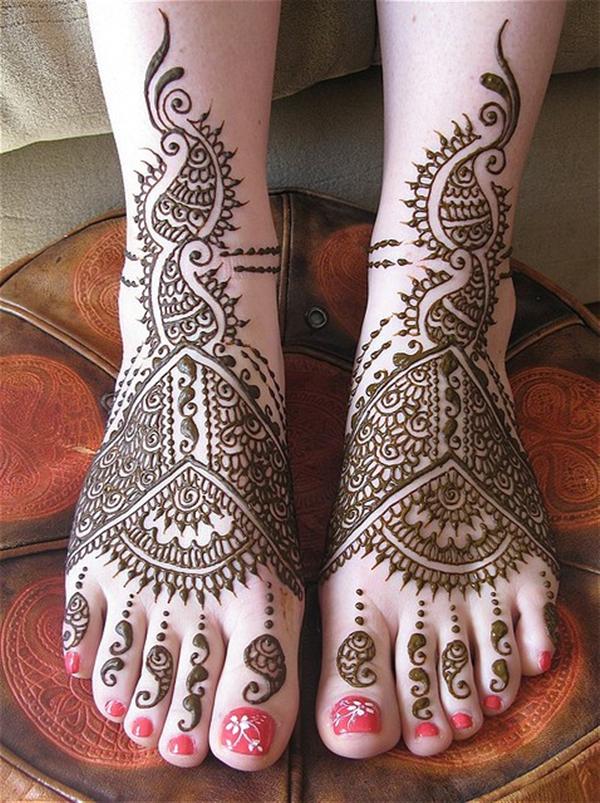
Originating from Indian peninsula, he Bridal Mehndi is heavily employed in Pakistan, Northern Libya and Northern India, while the intricacy and appeal of this temporary henna tattoo took the world over becoming a fashion trend. Although ancient, the mehndi tradition absorbed many traits of contemporary technology, and it often includes glittering and more modern, fine linework. Novel possibilities of preparing the very refined henna paste allowed for better quality of mehndi and opened a virtually limitless ornamental potential.
Today, there are numerous henna artists offering their services to brides and women of the world, not just in the historical home of mehndi. Their fees are sometimes very high, as the elaborate drawing and meticulous precision demand a lot of experience and skill.
How to do Henna Tattoos
Although it would be best to book your first henna tattoo appointment with an expert, just to see in person how great henna tattoo designs look like, it is possible to do it at home by yourself.
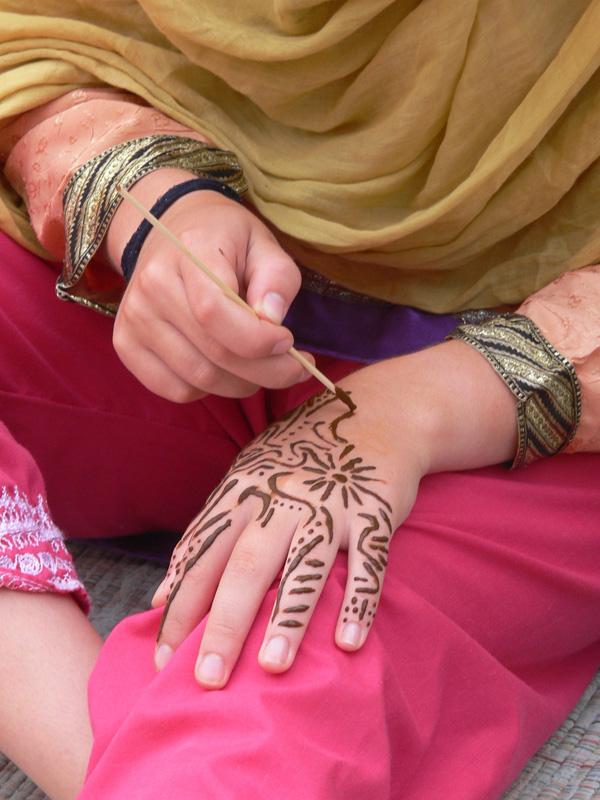
First, you will need a Henna Kit, which can be found in many online shops or hobby stores.
Material you need to make henna paste is Henna powder, about quarter of a cup, 2-3 spoons of strong tea, lemon, several drops of Eucalyptus oil. Application kit consists of little squeeze bottle, Q-tips, straight pin, cotton balls, lemon. When finished, paste is removed from the hand with cotton balls and olive oil.
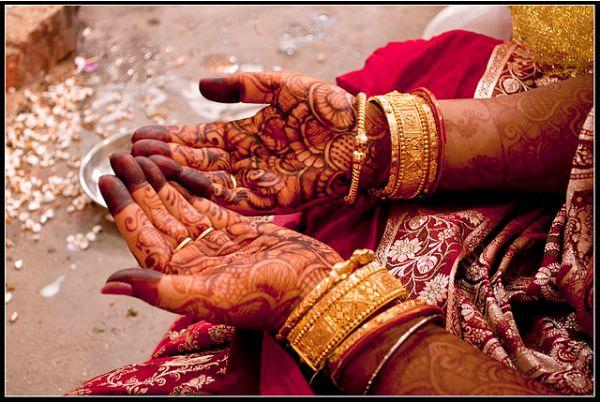
Henna paste – Mix your henna powder, very finely sifted with the strong dark tea adding it gradually, and juice of ½ of lemon, with a few drops of essential oil. The consistency of the paste should be a bit thinner than the toothpaste and very fine. No lumps!!!
Pour the paste into a little bottle for squeezing and let it sit for over an hour.
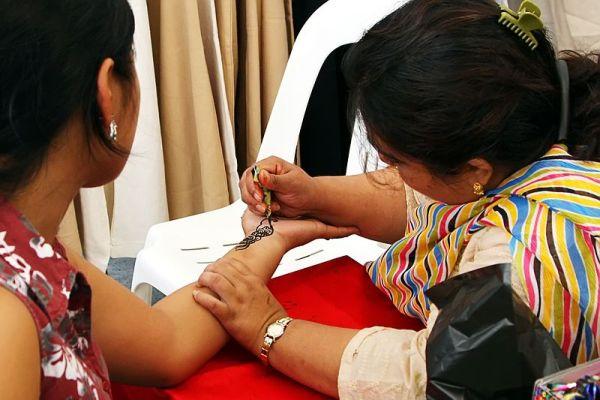
Try to draw on a piece of paper first, to make sure the paste is the right consistency. If too thick, dilute with tea. Also, try applying different tips to the bottle, in henna kits they range in width, giving different lines.
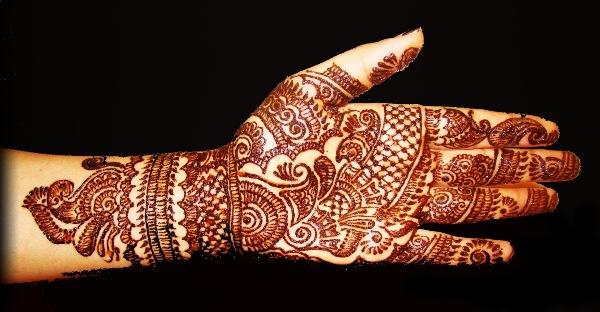
Application of henna – Scrub the hands that will be tattooed. They should be oil free and gently dried. Then start drawing! For beginners – always have a sketch and keep the design simple. Even the simplest design will look amazing if done perfectly, and if it’s messy – it doesn’t matter if it’s complicated – it will resemble a blot. Vines, circles, teardrops, little flowers are perfect to begin with. Draw from the center out, so you don’t smudge the design.
Mistakes – Fix the mistakes on the skin with Q-tips carefully. Unclog the bottle with a straight pin.
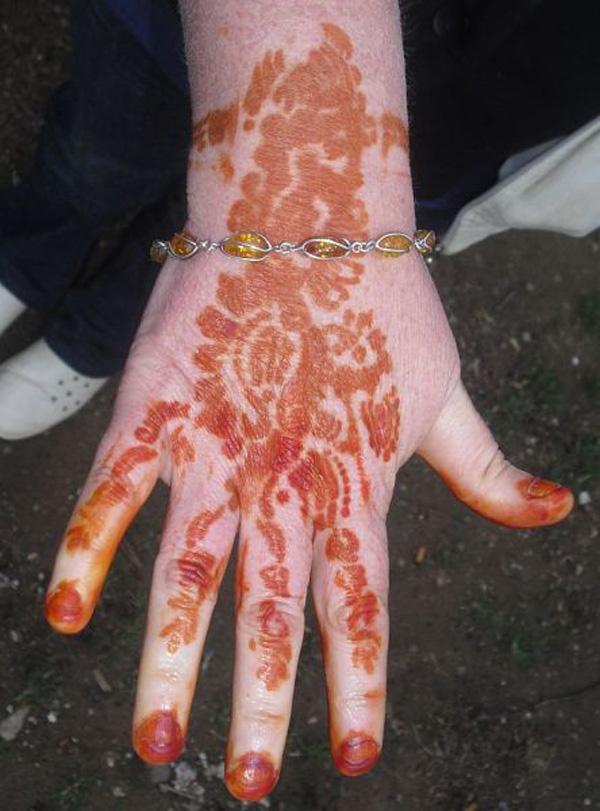
Drying – As henna dries, it will crack. Keep it moist by dabbing it with a cotton ball dipped in a mixture of lemon and sugar. It will make your tattoo nice and dark. Keep the henna on you hands as long as you possibly can – 12 hours even. If you can wrap it in paper and sleep in it – the better, but this risks smudging.
Remove the paste – Dip a cotton ball into olive oil (or any oil, but avoid water) and gently remove the paste. Your tattoo design will continue to darken in the next hours. If you can, stay away from water in this first period and do not use any abrasive cosmetics on your skin. It will help your henna tattoo last longer!
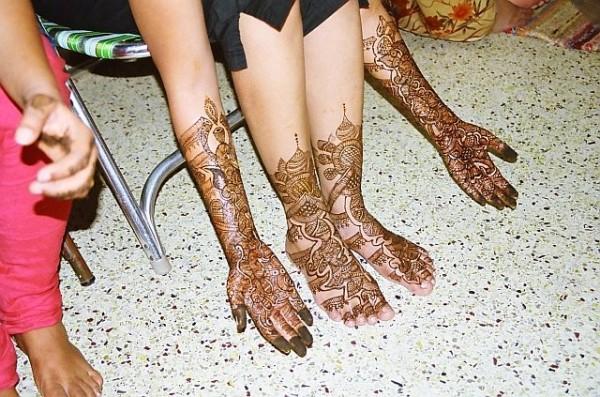
Different parts of skin absorb henna in different ways. Palms usually drink up the most, but the result is really individual.
Removing Henna Tattoos – Henna Tattoos usually fade away on their own. Most of them last for about two weeks, depending on skin type and color. If you are in a hurry to get rid of your henna ornament, try gentle peeling (but not too often) and washing your skin thoroughly, then applying oil on the desired spot. Scrub your skin daily, and it will vanish in several days.


